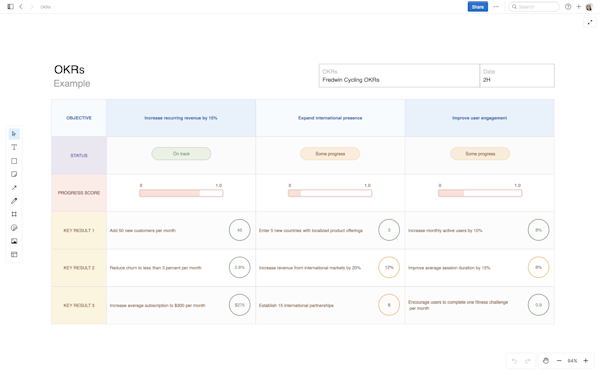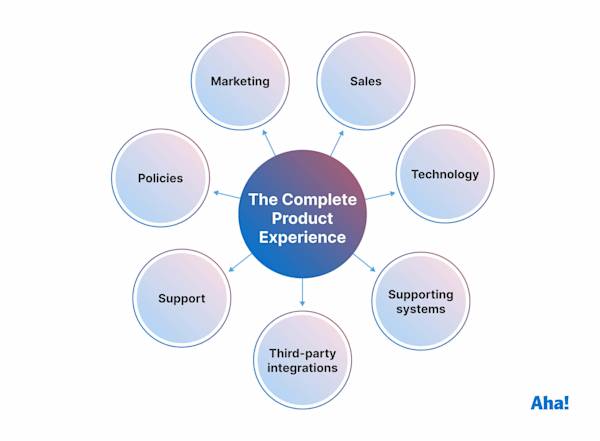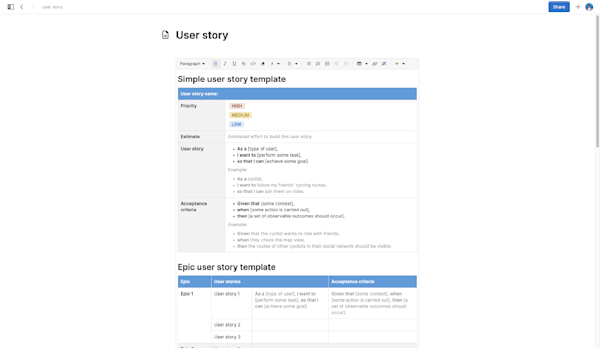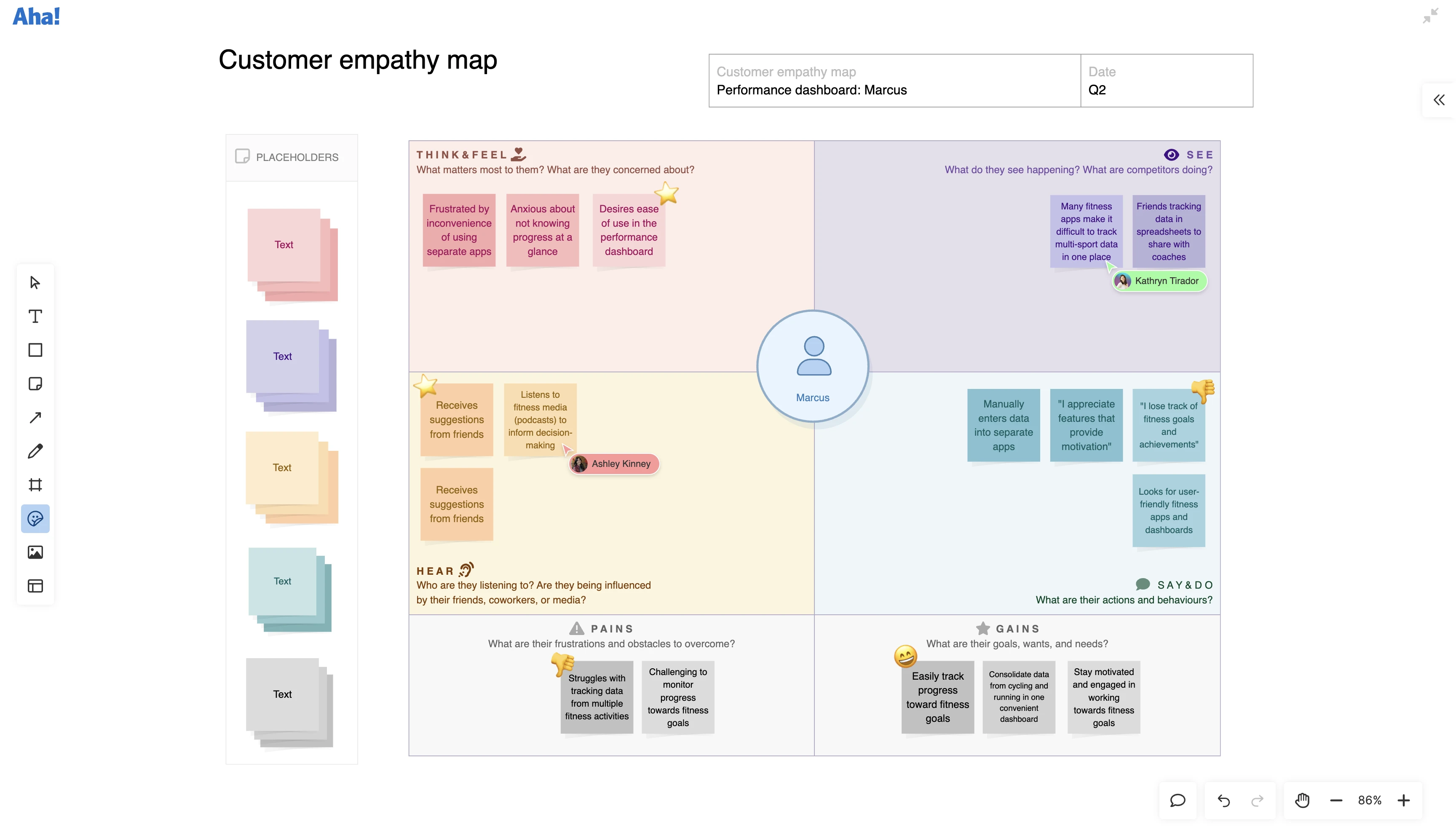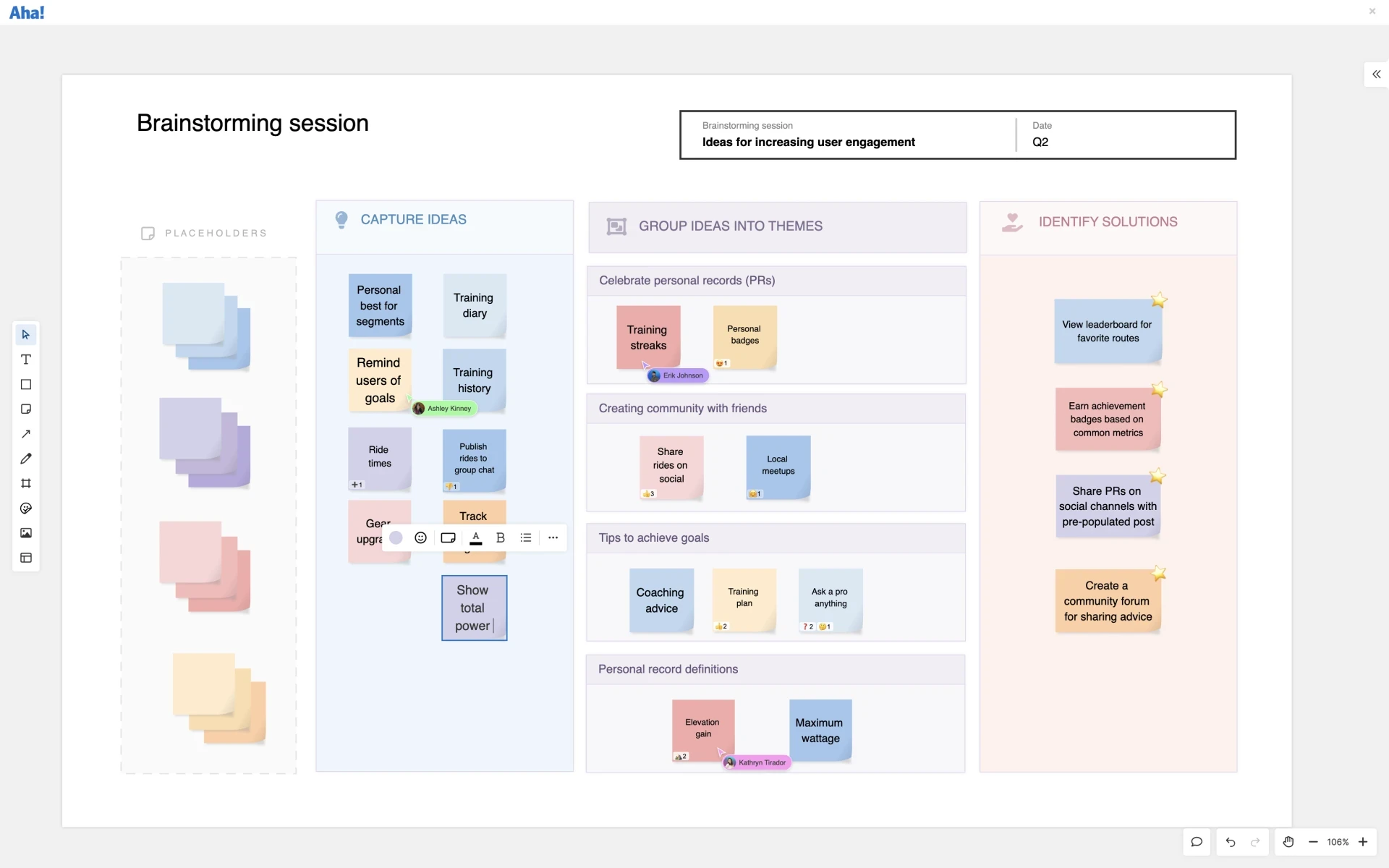How to use a digital whiteboard in product management
Explore ways to use whiteboard tools throughout product development — from strategy to delivery
Last updated: September 2025
Digital whiteboard tools help product managers visualize strategy, collaborate on ideas, and even plan how to deliver work across teams. This guide outlines practical use cases and whiteboard templates for every step of product development. Plus, see how Aha! Whiteboards connects to your live roadmap. |
How often do you use a whiteboard tool? If you are a product manager, a digital whiteboard is probably your go-to for activities such as brainstorming and sprint retrospectives. It is handy for thinking through concepts in a visual, nonlinear way. And it offers a central place for virtual collaboration (making digital whiteboards especially popular on remote and hybrid teams).
But what about the other jobs you have to do — feature prioritization or presenting your roadmap, for instance? Ever try a whiteboard?
You can use a digital whiteboard at any stage of product development. You rely on innovative thinking and cross-functional collaboration throughout the entire process of building a product, which whiteboard tools are excellent for. So it makes sense that they have a place in your workflows, from discovery to delivery (and we happen to have a few ideas on how to implement them).
Try the only whiteboard made for product teams — 30 days free.
It is likely that you already use a digital whiteboard for a few of these use cases, but we bet that some ideas in this list will be new to you. Let's go over examples of how product managers can use whiteboards throughout the product development process — plus, whiteboard templates to help you get started.
Strategize: Shape product strategy on a whiteboard, first
Product managers set the product strategy. As you think about goals and initiatives as well as the broader direction for your product, whiteboards can be useful for envisioning what you want to achieve. Strategic analysis, modeling, and artifacts — get it all done quickly and collaboratively in a visual space.
How to use a digital whiteboard for product strategy:
Define your high-level approach with a business model or lean canvas.
Run a SWOT analysis and check out competitors.
Capture first-draft personas, positioning, and value propositions.
